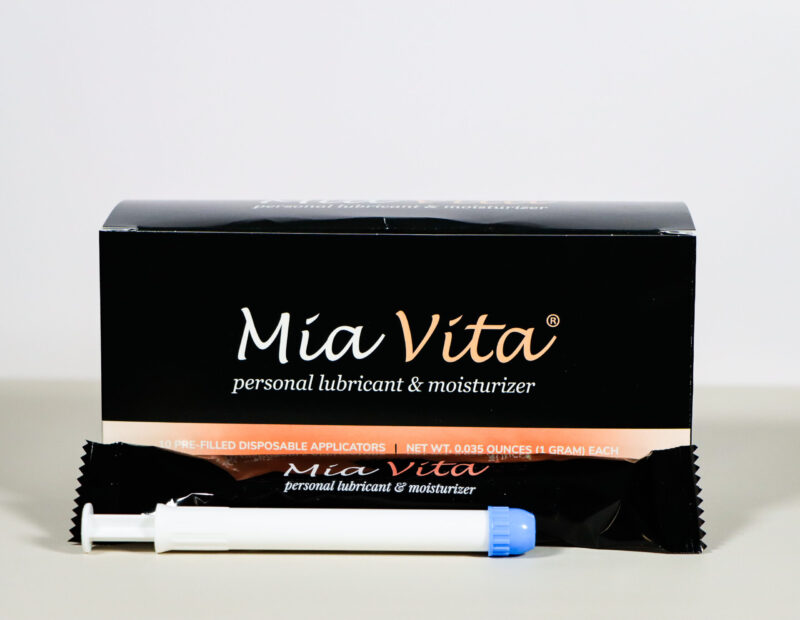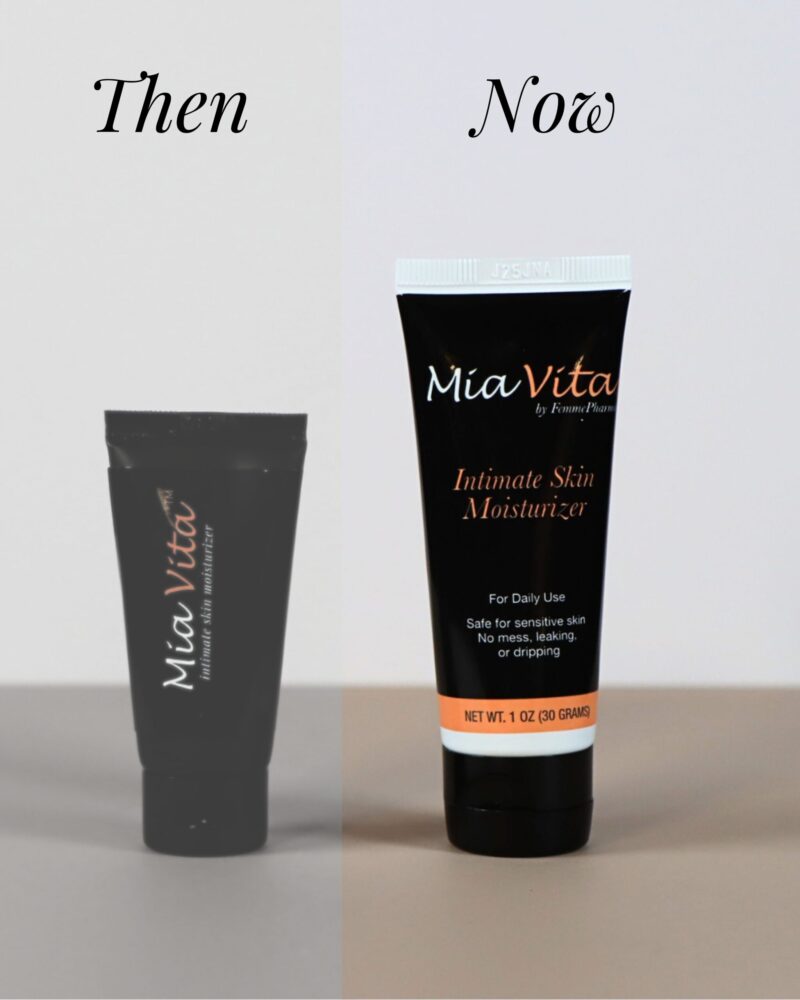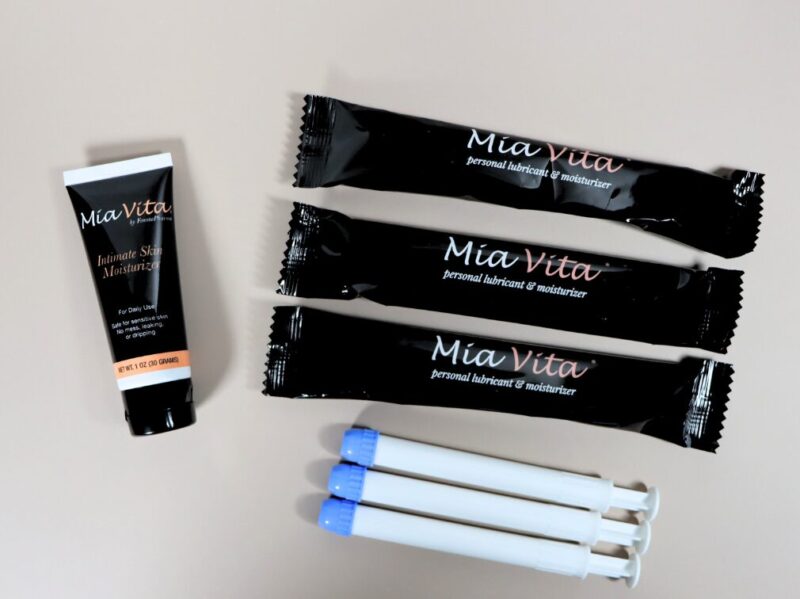March 1 marks National Dress in Blue Day. On the first Friday of March, those who are afflicted with colon cancer – along with their allies and supporters – wear blue to bring awareness to this disease and promote Colorectal Cancer Awareness Month.
Though highly preventable, colon cancer is often a silent and deadly disease. While colorectal cancer affects both men and women, there are specific nuances and considerations regarding its impact on women that we should be aware of.
What is colorectal cancer?
Colorectal cancer, often referred to as bowel cancer or colon cancer, originates in the colon or rectum. It may start as benign growths called polyps, which can become cancerous if not detected and removed. The disease ranks as the third most common cancer diagnosed in both men and women and is the second leading cause of cancer-related deaths in the United States.
Colorectal cancer in women
While historically seen as a disease primarily affecting men, colorectal cancer is increasingly affecting women. In fact, recent studies suggest that women may be at higher risk of dying from colorectal cancer than men due to factors such as hormonal differences and unique symptoms that may delay diagnosis.
What are the symptoms of colon cancer in women?
It’s important to identify the signs and symptoms of colorectal cancer in women to identify the disease and treat it effectively. Though the symptoms noted below may seem just part of normal gastrointestinal distress or indigestion, it’s important to take note of them as they can signal the early stages of colorectal cancer. Symptoms may include:
Changes in bowel habits
- Some of us may find it uncomfortable to pay attention to or discuss our bowel habits. However, if you notice changes — such as persistent diarrhea, constipation, or stool consistency – mention these to your doctor right away. It’s important to screen for and identify (or rule out) colon cancer when these changes occur.
- Rectal bleeding or blood in stool
- Again, this may be uncomfortable to discuss, but it’s important to note unexplained bleeding or blood in your stool and make an appointment with your primary care provider to investigate it further.
- Abdominal discomfort
- Persistent abdominal pain, cramping, or bloating may signal colorectal issues.
- Unexplained weight loss
- Significant and unexplained weight loss – without changes in diet or exercise – warrants medical attention.
- Fatigue or weakness
- If you feel more tired and rundown than usual, make an appointment with your doctor. Chronic fatigue or weakness not attributable to other factors should be evaluated.
What are the treatment options for colorectal cancer?
Treatment for colorectal cancer varies depending on the stage and individual patient factors, but often includes a combination of surgery, chemotherapy, radiation therapy, and targeted drug therapy. Early detection significantly improves treatment outcomes, highlighting the importance of regular screenings and awareness of symptoms.
Screening guidelines for women
Given the increasing incidence of colorectal cancer in younger populations, screening guidelines have evolved to recommend earlier initiation of screenings. While guidelines may vary slightly, most medical organizations recommend regular colorectal cancer screening starting at age 45 for average-risk individuals. However, women with certain risk factors, such as a family history of colorectal cancer or inflammatory bowel disease, may need to begin screening earlier.
As we observe Colorectal Cancer Awareness Month, it’s essential to recognize that colorectal cancer impacts women uniquely. Increased awareness, early detection, and proactive screening are crucial steps in reducing the burden of this disease on women’s health.
By understanding the signs and symptoms, advocating for timely screenings, and supporting ongoing research and education efforts, we can make significant strides in the fight against colorectal cancer for women and all individuals at risk. Let’s empower ourselves and our communities to prioritize colorectal health and save lives.
Diabetes In Women
When it comes to diabetes in women, hormones play a starring role—sometimes quietly influencing blood sugar levels behind the scenes, and other times making their presence loud and clear.
For women in their 40s and beyond, understanding how hormonal changes—from reproductive years through menopause—affect diabetes risk and management can be empowering. Whether you’re living with diabetes, concerned about prevention, or just trying to make sense of shifting health needs, here’s what every woman should know.
How Oral Contraceptives Affect Diabetes in Women
Oral contraceptives (birth control pills) can influence blood sugar levels due to their effects on estrogen and progesterone. While modern low-dose pills are generally safe for most women, they may slightly increase blood sugar or insulin resistance in some cases—particularly for women who already have prediabetes, diabetes, or other risk factors such as obesity or high blood pressure.
If you have diabetes, it’s important to discuss contraceptive options with your healthcare provider. Non-hormonal methods or lower-dose hormonal options may be better choices. Monitoring your blood sugar after starting any new birth control is wise—small adjustments in diet, activity, or medication might be needed to stay balanced.
The Role of Diet in Managing Diabetes
We’ve all heard that diet matters—but for women managing diabetes, food choices have especially powerful effects. A balanced, fiber-rich diet full of colorful vegetables, lean proteins, and healthy fats helps stabilize blood sugar levels and energy throughout the day.
Avoiding refined carbs and added sugars is crucial, but so is understanding how meal timing impacts glucose control—especially during midlife, when metabolism naturally slows. Eating smaller, balanced meals every few hours can prevent the spikes and crashes that affect both mood and energy.
Additionally, as estrogen levels decline in perimenopause and menopause, the body becomes less sensitive to insulin, increasing the risk of developing type 2 diabetes. Maintaining a healthy diet rich in magnesium, omega-3s, and phytoestrogens (found in flaxseeds, soy, and chickpeas) can help support hormonal balance and blood sugar regulation.
Stress: The Silent Blood Sugar Disruptor
Chronic stress is one of the most overlooked factors in diabetes in women. When you’re stressed, your body releases cortisol—a hormone that raises blood sugar to help you “fight or flee.” But when stress is constant (hello, midlife juggling act), cortisol remains elevated, leading to persistently higher blood sugar and increased insulin resistance.
In midlife, women often face unique stressors—career changes, aging parents, kids leaving home, and menopause symptoms—which can all add up. Incorporating regular stress-reducing practices like mindfulness, yoga, deep breathing, or simply walking outdoors can significantly lower both cortisol and blood sugar levels.
Sleep is also essential. Poor sleep increases cravings for sugary foods and decreases insulin sensitivity. Prioritizing rest isn’t indulgent—it’s medicine.
Pregnancy and the Risk of Gestational Diabetes
Even though pregnancy may be in the past for many women 40 and over, understanding its impact on long-term health is important. Women who experienced gestational diabetes (a type of diabetes that develops during pregnancy) have a higher risk of developing type 2 diabetes later in life.
If that’s you, regular blood sugar monitoring and healthy lifestyle habits are key preventive steps. The good news? Lifestyle changes such as regular exercise, balanced eating, and maintaining a healthy weight can cut your risk dramatically.
Perimenopause, Menopause, and Diabetes
The hormonal changes during perimenopause and menopause can have a profound impact on blood sugar control. As estrogen levels drop, insulin sensitivity decreases, and fat distribution changes—often shifting more toward the abdomen. This can make it harder to manage weight and blood sugar, even if your diet and exercise habits stay the same.
Hot flashes, night sweats, and sleep disturbances can also make it tougher to stay consistent with healthy habits. And when you’re tired, you’re more likely to reach for quick sugar or caffeine boosts, which can send blood sugar soaring.
Women in midlife should have their fasting glucose and A1C levels checked regularly, especially if they have risk factors like family history, excess weight, or prior gestational diabetes. The earlier changes are detected, the more effectively they can be managed through lifestyle adjustments.
Practical Tips for Women in Midlife
- Move daily. Regular activity—especially walking, strength training, or yoga—helps your body use insulin more effectively and supports hormone balance.
- Eat mindfully. Focus on whole foods and avoid processed snacks that cause glucose spikes.
- Manage stress proactively. Meditation, journaling, and laughter all lower stress hormones that affect blood sugar.
- Get consistent checkups. Routine screenings can catch changes early, when they’re easiest to address.
- Prioritize self-care. Rest, hydration, and community connection matter as much as medication or diet.
Diabetes in women is closely linked to hormonal health—and understanding that connection can help you feel more in control. From the impact of oral contraceptives to the challenges of menopause, every phase of a woman’s life brings unique considerations for blood sugar balance.
With mindful choices, regular health check-ins, and a bit of compassion for yourself along the way, you can navigate midlife feeling strong, informed, and empowered—not defined by numbers on a chart, but guided by knowledge and care.
Why Intimacy Justice is the Next Frontier in Women’s Health
We are proud to stand with our partner, the Center for Intimacy Justice (CIJ), an organization committed to ensuring that every woman has access to safe, accurate, and dignified care. In a recent interview, CIJ leaders broke down the critical gap between medical ethics and patient reality, revealing why the fight for intimacy justice is the foundation of self-advocacy.
What is Intimacy Justice?
Intimacy justice is the simple, yet profound, recognition that access to accurate information, respectful care, and freedom from exploitation regarding your sexual and intimate life is a fundamental human right. For the CIJ, this means working to stop the exploitation of women in the healthcare marketplace by exposing misleading marketing and fighting for evidence-based standards in intimate wellness.
The CIJ champions the conviction that a woman is not just a patient: A woman is a sovereign individual with the right to agency over their body, their pleasure, and their decisions.
Beyond Euphemisms
One of the most persistent barriers to equitable care is our language. Consequently, The avoidance of anatomically correct terms in public and clinical settings—using vague euphemisms instead of “vagina,” “vulva,” or “clitoris”—has a severe negative impact on a woman’s health journey.
- Impact on Diagnosis: When patients and even physicians use vague language, it leads to ambiguity and diagnostic imprecision. You cannot accurately communicate chronic pain, atrophy (GSM), or specific symptoms if you cannot name the anatomy involved. This imprecision directly contributes to the gender data gap and delays effective treatment.
- A Foundation of Empowerment: The CIJ asserts that using correct terminology is not just about being polite—it is an act of self-advocacy. It forces both the patient and the physician to acknowledge the issue as a legitimate medical concern, elevating the conversation above societal shame.
Justice and the Self
According to the CIJ, the most important conversation currently being overlooked at the intersection of intimacy and justice is the need for every woman to find her true voice and agency in her sexual life. This is about moving past a history of fear-based sexual education and embracing the confidence to be seen, wanted, and valued.
This theme is critical because a lack of sexual confidence (self-efficacy) and unaddressed trauma are major contributors to anxiety, chronic pelvic pain, and sexual dysfunction in midlife.
To add to this, If intimacy justice were a required curriculum in schools, the core takeaways would focus on building this foundation of self-worth and accurate anatomical knowledge:
- Unlearn and Reclaim: The first step is unlearning the fear-based, negative messages women receive about their bodies and sexuality.
- Know Your Terms: Mandating anatomical accuracy to empower every individual to communicate clearly and seek precise medical care.
- Demand Your Space: Instilling the right to demand dignity, safety, and respect in all relationships and medical interactions.
FemmePharma stands with the Center for Intimacy Justice: By equipping women with precise language and scientific authority, we can empower them to take control of their health destiny.
Check out CIJ on our Instagram: https://www.instagram.com/reel/DQCGCHbEQGs/?igsh=YnNsMnB0MHhzdW92)
Shop FemmePharma Intimate Skincare
Setting Social Media Boundaries for Better Mental Health
There’s something about the holidays that tugs at your heart—warm lights, familiar faces, nostalgia. And yet, for many of us middle-aged women, especially those navigating perimenopause or menopause, the emotional landscape can feel busier than ever. Add in social media, and it can all feel overwhelming.
Learning how to set healthy boundaries around our online lives isn’t just a “nice to have”—it’s a tool for protecting our mental wellness and deepening our connections with the people who mean the most.
Why Social Media Boundaries Matter
You may already sense it: doom-scrolling late at night, the anxiety that comes from comparing yourself to perfect snapshots, or the little tension you feel when relatives tag you in something you’d rather not respond to. For many people, social media carries more friction than joy.
- Doom-scrolling can leave you more drained than refreshed. The habit of endlessly swiping through news feeds or posts can make you feel anxious or emotionally “heavy.”
- Comparison anxiety—“Why don’t I look like her?” or “How can she be so organized? These can erode confidence at a time when your body, your energy levels, and your sense of self may already be in flux.
- Family tension online—misunderstandings in comments, or watching relatives post opinions you don’t share—can turn a seemingly innocent scroll into emotional stress.
Those are real burdens. But boundaries offer a way to reclaim your calm, your self-worth, and your relationships.
Setting Boundaries with Yourself
It’s important to get grounded in how you want to use social media. Ask yourself:
- How much social media time per day feels healthy? Maybe you decide that 20 minutes in the morning and 10 minutes in the evening is plenty.
- What kinds of interactions energize you, and which feel exhausting? Unfollow or mute accounts that make you feel less like yourself.
- What times of day should be off-limits? For instance, no social media before bed or during meals.
- Can you carve out “notification-free windows”—periods when you deliberately silence alerts, or log off entirely?
You might try using built-in tools on your phone to limit usage, or set up “app timers.” You can even write yourself a commitment (“I will only open Instagram once between 9 a.m. and 10 a.m.”) and treat it like any other self-care ritual. The more consistent you are, the more these new habits become second nature.
Social Media Boundaries for the Holidays
The holidays are often about togetherness. That time around the dining table, that loud laughter across the living room, that gift-wrapping chaos: those are moments you’ll cherish. But if part of your brain is still waiting for a notification, or you’re distracted by an app in your pocket, you’re not fully there.
When you pick up your phone at dinner, or you’re tempted to check social media while wrapping presents with your daughter or grandkids—you risk losing presence. Over time, those small distractions can chip away at emotional connection.
By contrast, silencing your phone, putting it out of reach during meals, or instituting a “no-scroll hour” when you’re with friends or family can change the vibe entirely. Conversations flow more deeply. You catch nonverbal cues—the laugh, the tears, the shared glance. You don’t miss what’s being said between the lines.
For someone in perimenopause or menopause, emotional sensitivity may feel higher (mood swings, irritability, fatigue). Being fully present can help you sense when someone needs support or laughter, and it anchors you in the joy and mess of real life, not filtered snapshots.
The Ripple-Effect of Social Media Boundaries on Your Relationships
When you show up fully—phone-free at dinner, eyes on your loved one instead of on a screen—you communicate something powerful: you respect them, you value the moment, and you’re choosing relationships over notifications.
That ripple-effect can be subtle but significant:
- Your children, siblings, or friends feel seen. They remember you smiling at them, not looking down to scroll.
- You model healthy boundaries (and maybe inspire them to do the same).
- You feel more in control of your time instead of letting apps pull you in by default.
- You reduce chances for family conflict that may arise from mis-likes, misplaced comments, or endless group-chat threads during tense family seasons.
Tips to Get Started (Your Holiday Boundary Plan)
- Write your holiday-season phone policy
For example: “No social media during meals or family game time.”
- Use technology to help you
Turn on “Do Not Disturb” or mute groups and apps during certain hours.
- Communicate gently
Let family or friends know: “I’ll be off social media during our get-together—it helps me be more present.”
- Designate “check-in moments”
Maybe you’ll scroll once after lunch, and again after evening cleanup. Outside those times, you keep your phone tucked away.
- Reflect regularly
At the end of each day or week, ask: “Did I feel more connected? Less anxious? More relaxed?” Adjust as needed.
For women in perimenopause or menopause, life often shifts in unexpected ways—and that includes how we relate to ourselves, our bodies, and our time. Social media doesn’t have to feel like a storm we’re carried through. With simple, compassionate boundaries, you can redirect your attention toward what matters: real laughter around the table, honest conversation with your sister, quiet moments with someone who cares.
This holiday season, choosing presence may turn out to be the greatest gift you give—to yourself and to those you love.



